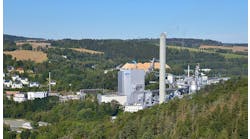From the Editors of CONTROL
However, designed using a commercially available modeling and control package, the application was originally commissioned in 2001, and ran for about a year until process changes in the distillation section resulted in significant changes in the underlying predictive models. These caused most of the MPC controller to be turned off by the board operators. The combination of poor controller models and significant unit performance issues resulted in a very low and limited use of the MPC and thus poorer operating margins.
Greg Kautzman, Mandan’s process control engineer at Mandan, reported on May 9 at Matrikon Summit 2007 that Tesoro needed to reactivate the application, but also needed to address the maintenance challenge associated with time consuming and expensive conventional plant step tests. “We had to find the balance between managing the MPC maintenance workload, and ensuring sustained optimal performance of the MPC controllers,” he says.
Jim Anderson, of Saudi Aramco, reported that his company faces many of these same issues, including an aging workforce, during his subsequent presentation at Matrikon Summit. He added the Matrikon’s Control Performance Monitor has helped there as well.
In addition, though it had installed an APC system, Mandan was also faced with operators that weren’t able to support and monitor the system enough, which caused the system to decay. Primary causes included MPC “model degradation,” lack of operator support, changing conditions and objectives, degradation of support elements, including PID layer, analyzers, and inferentials.
“The crude unit processes light and sweet crude into naphtha, jet, gas oil, and reduced crude. The objective was to keep the product streams on specification while saving energy when possible,” says Kautzman.
Consequently, Tesoro selected Matrikon’s Control Performance Monitor and Tai-Ji automated plant testing and identification package because they could perform open-loop and closed-loop testing simultaneously, perform fully automated testing, test all MV variables simultaneously, and integrate identification run recursively during tests. Kautzman adds their main benefits are less disruption to operations, less monitoring by process control staff, less chance of poor models or testing re-work, and test times that are 75% faster than traditional methods.
Mandan’s initial implementation tested 21 manipulated variables that were moved automatically. The automated tester generated a unique test signal pattern for each MV using a few simple rules, including the MV move size was discussed and agreed on with plant operations, MV move durations vary, depending on the estimated time to steady state for the process, and MV move patterns are largely uncorrelated. These tests took a total of four days, and model identification took one day. Previous plant tests took 21 days, not including modeling.
“We found that selection of the step size is an important parameter in developing the test. This is selected by reviewing the original open loop steps tests along with discussions with the board operators,” says Kautzman. “Users should give board operators the ability to selectively inhibit test variables or modify step size. Run identification is needed every six hours to review model quality progress, and adjust testing parameters, such as step size and flip frequency.
“This was the first trial of technology at Tesoro. This technology has now been licensed to all six of our refineries. Next steps for us include formalizing this best practices approach to maximizing use and value. We’re also integrating on-line, real-time monitoring of MPC performance, so MPC model quality can be tracked over time, and so we can measure the need for plant re-testing. We’re also going to implement PID, soft sensor, and MPC on-line monitoring, so MPC controller issues can be extended and fully managed to prevent model degradation.”
| Matrikon Control Performance Monitor — Identify, Diagnose and Correct Regulatory and Advanced Controls - Improve control loop and APC performance - Enable control loop and APC monitoring and tuning - Take advantage of multivariate step testing Click and watch an interactive demonstration and learn how to reduce process variability. |




